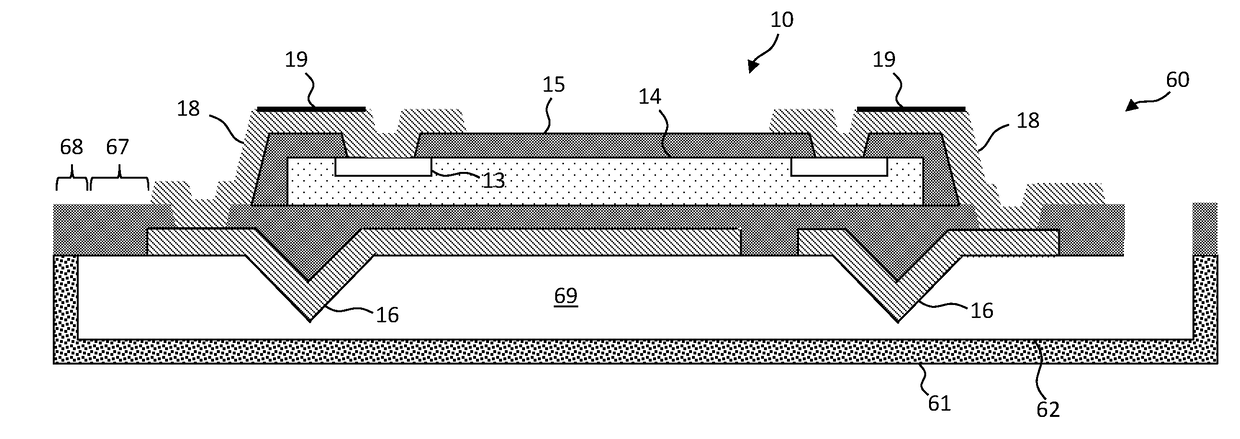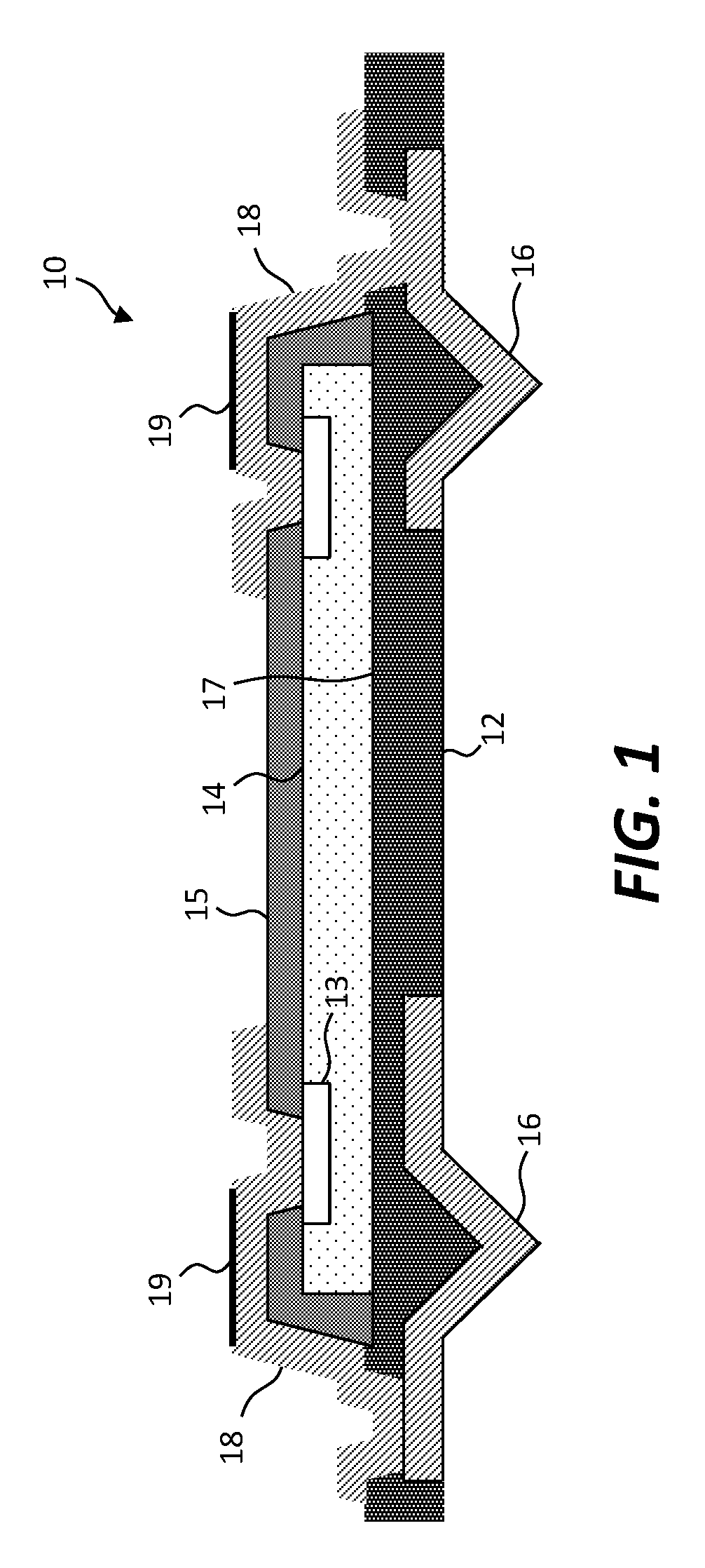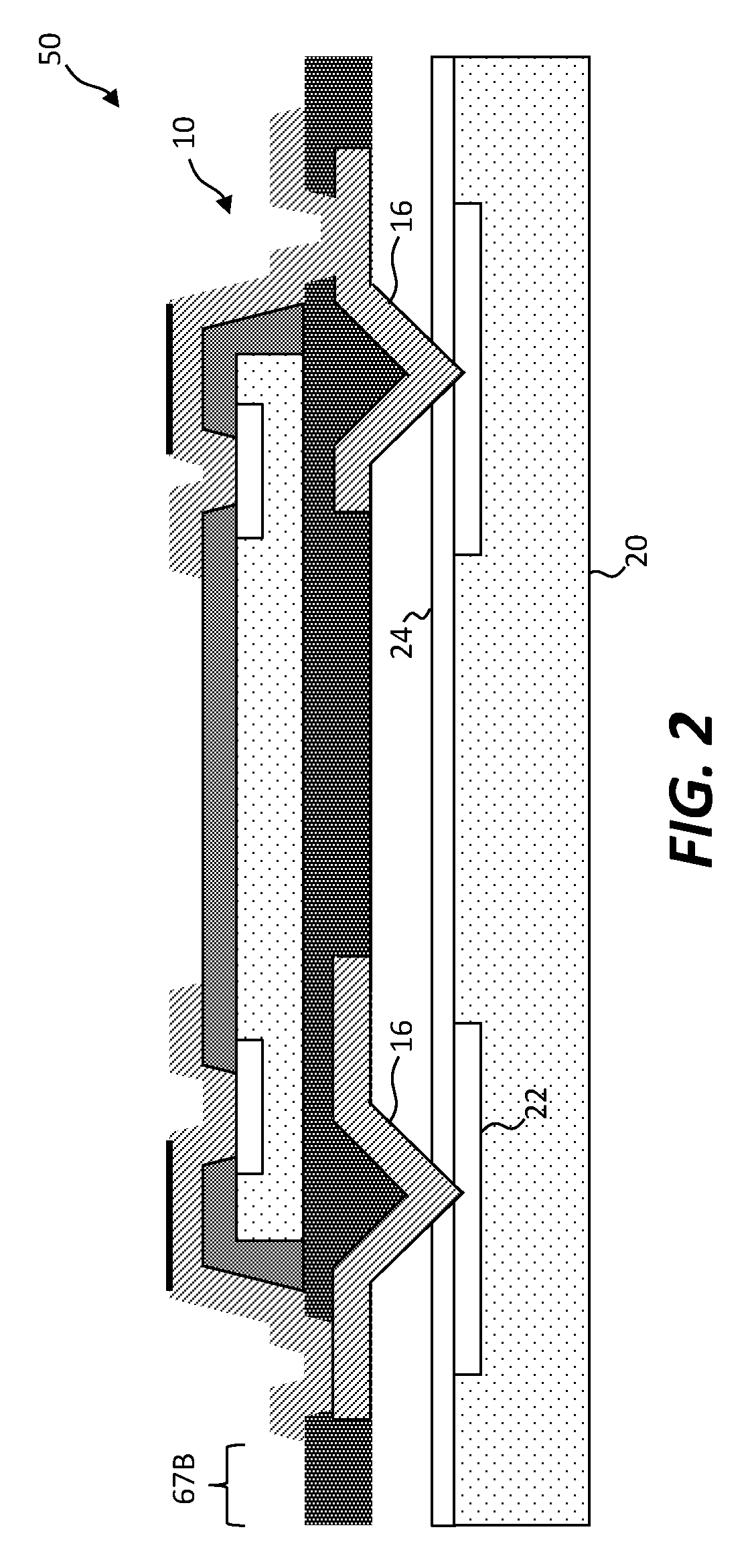Printable 3D electronic structure
- Summary
- Abstract
- Description
- Claims
- Application Information
AI Technical Summary
Benefits of technology
Problems solved by technology
Method used
Image
Examples
Embodiment Construction
[0049]The present invention provides, inter alia, structures and methods for electrically connecting relatively small electrical components such as integrated circuit chiplets in a simple, efficient, extensible, flexible, and cost-effective way. The integrated circuit chiplets (chiplets) can be electrically connected to a destination substrate or one chiplet can be electrically connected directly to another chiplet, for example in a three-dimensional stack of chiplets, or to three or more chiplets, forming a three-dimensional electronic structure.
[0050]Referring to the cross section of FIG. 1, in some embodiments of the present invention, a printable (e.g., micro-transfer printable) electronic component 10 or printed electronic component 10 (hereinafter component 10) includes a component substrate 12 and a circuit 14 disposed in or on the component substrate 12, for example disposed on a component surface 17 of the component substrate 12. The circuit 14 can include or be electricall...
PUM
 Login to View More
Login to View More Abstract
Description
Claims
Application Information
 Login to View More
Login to View More - R&D
- Intellectual Property
- Life Sciences
- Materials
- Tech Scout
- Unparalleled Data Quality
- Higher Quality Content
- 60% Fewer Hallucinations
Browse by: Latest US Patents, China's latest patents, Technical Efficacy Thesaurus, Application Domain, Technology Topic, Popular Technical Reports.
© 2025 PatSnap. All rights reserved.Legal|Privacy policy|Modern Slavery Act Transparency Statement|Sitemap|About US| Contact US: help@patsnap.com



